SOW GREEN THIS AUTUMN

Green manures are quick-growing crops sown mainly for the benefit of the soil. They act as a kind of green blanket that both protects and improves the soil and can also encourage the essential life it contains. They are usually sown on to bare land that isn't currently supporting edible crops.
They can be used all year round but are especially important in winter to cover soil that has been working hard all summer and is now empty and awaiting spring sowings. Some gardeners like to follow the traditional method of digging and leaving the soil exposed over winter for the frost to make it nice and crumbly for sowing. However, this leaves it vulnerable to 'leaching' - valuable nutrients being washed down and out of the reach of next season's crops and into the water table below where it can potentially add to pollution problems.
Green manures instead form a green umbrella over the surface, protecting it but also absorbing nutrients as they grow, locking them away in leaves and stems. The roots help to channel the soil, improving structure and, depending on type, bringing nutrients up from deep below into the reach of other crops.
September-sown green manures grow slowly over winter and then, before they become too established in spring, are chopped and dug into the soil in which they have grown, so putting back those nutrients, plus some they will have made. They also add humus as they break down and help to feed soil life in preparation for another season of sowing and planting.
ROUGH AND TOUGH
At this time of year it is important to choose only hardy green manures that can withstand the cold and frost, but thankfully there are a few, all hardy annuals, that can shake off all the winter may throw at them.
FIELD BEANS
Bu hikaye Kitchen Garden dergisinin September 2024 sayısından alınmıştır.
Start your 7-day Magzter GOLD free trial to access thousands of curated premium stories, and 9,000+ magazines and newspapers.
Already a subscriber ? Giriş Yap
Bu hikaye Kitchen Garden dergisinin September 2024 sayısından alınmıştır.
Start your 7-day Magzter GOLD free trial to access thousands of curated premium stories, and 9,000+ magazines and newspapers.
Already a subscriber? Giriş Yap

DIGGING THE DIRT NEW KIDS ON THE BLOCK
Every allotment site needs its own superhero and, luckily for John Holloway and his fellow allotmenteers, Sailor Steve came to the rescue
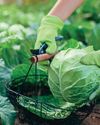
MAKE ROOM FOR CABBAGE
Our humble cabbage is a powerhouse of goodness and we could all benefit from eating more of it. KG deputy editor Emma Rawlings offers tips on growing this popular brassica

SWEET DREAMS ARE MADE OF THESE
Instagrammer Olga Grieves is passionate about growing sweet peas. This month she shares her favourite varieties and explains how to create a stunning display
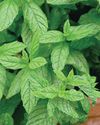
HERB OF THE MONTH MINT
With its strong flavour, distinctive aroma and its versatility, mint has to be one of the best herbs to have outside your back door, ready for you to pick from spring through to autumn
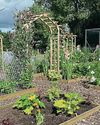
PRODUCTIVE PLOT
Last summer we launched a competition to find our Top Plotters, with the top three winning some great prizes and the chance to be featured in Kitchen Garden magazine this year. Here we meet our third-placed winner
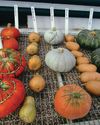
SUPER SOUASHES
Every garden should make space for squashes but with so many to choose from and so many ways to grow them, where to begin? Benedict Vanheems gets us started
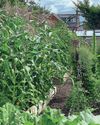
GET PLANNING!
As much as we love to get going straightaway on our veg patch or allotment it's always good to start with a plan, as Becky Searle explains

Bio-stimulant or plant food: What's the difference?
Angharad James, product manager at Maxicrop, explains the difference between a bio- stimulant and plant fertiliser, and discusses which to choose when for a thriving garden

MEET THE BLOGGER MY COTTAGE GARDEN
Inspired by her grandfather, Instagrammer Sarah Pursey from Northamptonshire shares her passion for growing veg and flowers in her long back garden, a throwback to the 1930s

POTTY ABOUT STRAWBERRIES
This month David Patch turns his attention to growing succulent strawberries in pots, offering useful practical tips and recommendations for some choice varieties
